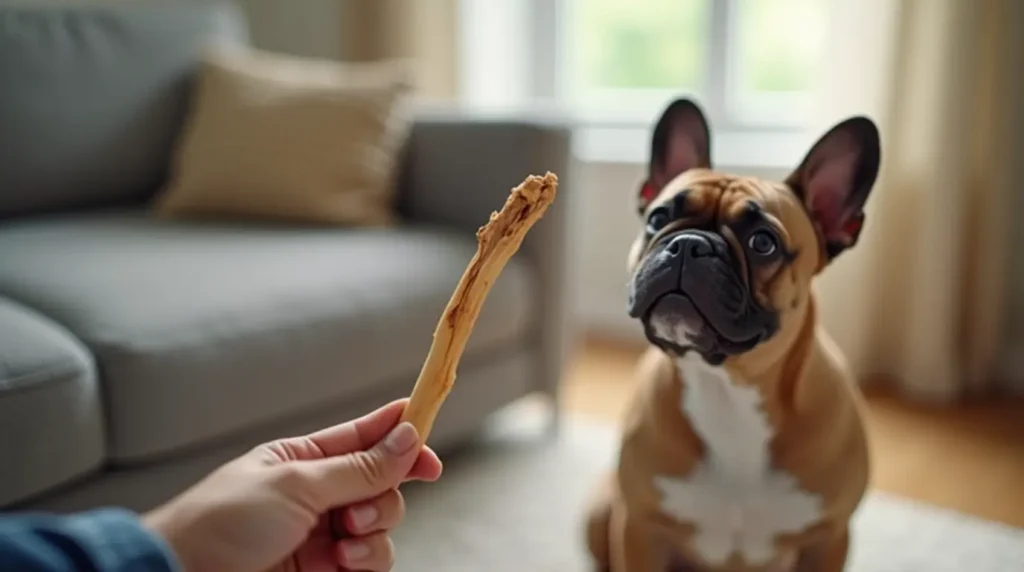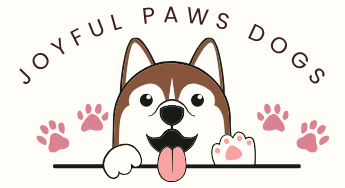As a dog owner, you want your furry friend to be happy and healthy. Bully sticks, made from 100% beef muscle, are a popular treat. They can help reduce boredom and stress in dogs. But, it’s important to know if bully sticks are safe for dogs.
Understanding the risks and benefits is key. This includes how they affect canine oral health and the importance of a dog dental chart. Knowing this helps you give your dog a healthy and fun treat.
Table of Contents
When you introduce bully sticks, think about your dog’s digestive health and allergies. High protein treats like bully sticks can upset a dog’s stomach if introduced too fast. This can lead to diarrhea or vomiting in dogs not used to high protein.
To lower this risk, start by giving your dog bully sticks for 5 to 10 minutes. Watch them closely while they chew to avoid choking or blockages. This is especially true for pieces smaller than 2.5 to 3 inches.
By knowing the risks and taking steps to avoid them, you can ensure your dog enjoys bully sticks safely. This supports their oral health and overall well-being. In this article, we’ll explore the benefits and risks of bully sticks. We’ll also guide you on how to choose the right ones for your dog and promote a healthy dog dental chart.
What Are Bully Sticks?
Bully sticks are a favorite treat for dogs, made from 100 percent beef muscle. They come from the bull’s pizzle. These treats are natural, single-ingredient, and easy to digest. They help keep a dog’s teeth clean by reducing plaque and promoting pet dental care.
As a dog chews on a bully stick, it helps remove plaque. This supports dental hygiene for dogs and keeps their canine teeth anatomy healthy.
There are many types of bully sticks, like standard, thick, odor-free, and braided. Each type has its own benefits. The right one for your dog depends on their size, age, and how they chew. For example, bigger dogs might do better with thicker sticks, while smaller dogs might prefer thinner ones.
Definition and Origin
Bully sticks are made from the bull’s pizzle, a muscle full of protein and low in fat. They are a natural, single-ingredient treat that is easy for dogs to digest. They support a dog’s overall health.
Types of Bully Sticks
Some common types of bully sticks include:
- Standard bully sticks
- Thick bully sticks
- Odor-free bully sticks
- Braided bully sticks
Nutritional Value
Bully sticks are a nutritious treat for dogs, with lots of protein and little fat. They help support a dog’s health and can be a better choice than other treats.
It’s important to choose bully sticks that fit your dog’s needs and likes. With so many options, you can easily find the perfect one for your furry friend.
| Type of Bully Stick | Characteristics | Benefits |
|---|---|---|
| Standard | Medium thickness, high protein content | Suitable for most dogs, promotes dental health |
| Thick | Thicker than standard, longer lasting | Suitable for larger dogs, reduces chewing time |
| Odor-free | Low odor, made with natural ingredients | Suitable for dogs with sensitive stomachs, reduces odor |
Benefits of Bully Sticks for Dogs
As a dog owner, you want the best for your pet. This includes keeping their teeth clean and healthy. Bully sticks can help a lot with this, making your dog’s life better.
Bully sticks are great for keeping your dog’s mind active. They help prevent boredom and stress. They also clean your dog’s teeth, which is good for their health. Plus, they’re full of protein, which is good for your dog’s overall health.
Some key benefits of bully sticks include:
- Improved dental health through the removal of plaque and tartar
- Mental stimulation and stress reduction
- High protein content to support overall health and well-being
Adding bully sticks to your dog’s diet can improve their health. Make sure to pick high-quality ones and follow the feeding guidelines. This way, your dog gets the most benefits from these tasty treats.
| Bully Stick Size | Recommended Dog Weight |
|---|---|
| Thin | Under 15 lbs |
| Midsize | 15-30 lbs |
| Thick | 30-50 lbs |
| Jumbo | 50-75 lbs |
| Extra Jumbo | Over 75 lbs |
Are Bully Sticks Safe for All Dogs?
As a dog owner, it’s key to think about bully sticks’ safety for your pet. Bully sticks can be a great, healthy treat for many dogs. But, there are things to keep in mind. For example, puppies might need smaller or softer bully sticks to avoid choking.
Dogs with allergies or digestive problems might need to stay away from bully sticks. When checking if bully sticks are safe for your dog, think about their size and how they chew. Canine oral health is very important for your dog’s overall well-being. Bully sticks can help keep their teeth and gums healthy.
By picking the right size and type of bully stick, you can help prevent gum disease. A dog dental chart can help you keep an eye on your dog’s teeth and spot any problems early.
Some dogs might need special care with bully sticks. Dogs with sensitive stomachs might need to avoid certain bully sticks or eat them in small amounts. It’s also smart to talk to a vet about your dog’s teeth and gums.
- Choose the right size and type of bully stick for your dog
- Watch how your dog chews and adjust as needed
- Talk to a vet if you’re worried about your dog’s teeth
| Dog Size | Bully Stick Size |
|---|---|
| Small | 6 inches |
| Medium | 12 inches |
| Large | 12 inches or larger |
Choosing the Right Bully Sticks
Choosing the right bully sticks for your dog is important. You want to ensure they are safe and fun for your pet. Regular dog teeth cleaning and oral health exams for dogs are key. But picking the right bully sticks also helps keep your dog’s pet dental care in check.
Think about your dog’s age, size, and how they chew. Small dogs do well with thinner sticks, while medium and large dogs need thicker ones. The stick’s thickness also matters. It affects how long it lasts and how much fun it is for your dog.

- Size: Ensure the stick is at least 1.5 times longer than your dog’s muzzle for safety.
- Thickness: Choose a thickness that suits your dog’s chewing style, from thin to jumbo.
- Material: Opt for high-quality, single-ingredient bully sticks made from beef or buffalo.
- Brand: Select a reputable brand that adheres to USDA-approved processing standards.
By considering these factors and picking the right bully sticks, you can boost your dog’s oral health. You’ll also give them a fun, long-lasting treat. Always watch your dog while they chew and don’t let them chew for too long. With the right bully sticks, you’ll know you’re giving your dog the best for their pet dental care.
Potential Risks of Bully Sticks
As a dog owner, knowing the risks of bully sticks is key. They can be a healthy treat for many dogs. But, there are dangers to watch out for. It’s important to understand canine teeth anatomy to avoid choking hazards.
Dogs can also face digestive blockages from eating large or hard bully sticks. If you think your dog has eaten a bully stick that might cause a blockage, get veterinary dental services right away. Pet dentistry techniques can help prevent and treat dental issues linked to bully sticks.
To lower risks, start by giving your dog small amounts of bully sticks for a few minutes. Always watch your dog while they chew. Take away the bully stick when it’s too small to swallow whole to avoid choking.
Knowing these risks and how to avoid them can keep your dog safe. Enjoying bully sticks is possible with the right precautions. Always put your dog’s health first and talk to a vet if you have any worries.
| Risk | Description | Prevention |
|---|---|---|
| Choking Hazards | Occur when a dog swallows a large piece of a bully stick | Supervise your dog while they chew, remove bully sticks when they become small enough to be swallowed whole |
| Digestive Blockages | Occur when a dog eats a bully stick that is too large or hard to digest | Seek veterinary dental services if you suspect a blockage, introduce bully sticks gradually |
| Bacterial Contamination | Can occur if bully sticks are not stored or handled properly | Store bully sticks in a cool, dry place, wash your hands before and after handling |
How to Safely Offer Bully Sticks
When giving bully sticks to your dog, think about their canine oral health. It’s important to watch them while they chew and not let them chew for too long. This helps avoid choking and makes sure they don’t eat too much at once.
A dog dental chart can help you keep an eye on your dog’s teeth. It’s good to add regular brushing and vet visits to their care routine. This way, you can keep their teeth and gums in top shape.
Here are some tips for safely giving bully sticks to your dog:
- Supervise their chewing at all times
- Limit their chew time to 5-10 minutes
- Choose the right size of bully stick for your dog
By following these tips and thinking about your dog’s canine oral health and pet dental care, you can make sure they enjoy bully sticks safely and healthily.

| Dog Size | Recommended Bully Stick Size |
|---|---|
| Small | 5-6 inches |
| Medium | 7-8 inches |
| Large | 9-12 inches |
Signs of Problems After Chewing
As a dog owner, it’s key to know when your dog has chewed on bully sticks and shows signs of trouble. Look out for unusual behavior or symptoms. These might mean you need to get veterinary dental services or an oral health exam for dogs. Issues like choking, stomach problems, or allergies could pop up.
Choking signs include trouble breathing, gagging, or mouth pawing. Stomach issues might show as vomiting, diarrhea, or feeling very tired. If you think your dog ate a bully stick and it’s hurting them, call a vet right away. Regular dog teeth cleaning can also stop oral health problems.
Watching your dog closely after they chew on bully sticks or new treats is important. If they act strangely, try different treats like sweet potato chews or fish skins. Always put your dog’s health first and get expert advice if you’re not sure about their care.
| Common Issues | Symptoms |
|---|---|
| Choking | Difficulty breathing, gagging, pawing at the mouth |
| Gastrointestinal Distress | Vomiting, diarrhea, lethargy |
Alternative Treats for Dogs
As a dog owner, you want the best for your pet. This includes treats that support their health and well-being. For canine oral health, consider treats that help with pet dentistry techniques and a healthy dog dental chart. Natural chews, like antler chews, are a good choice. They come from elk, moose, and deer and are shed every year.
Long-lasting treats, like dental chews or interactive toys, are also great. They keep your dog busy and help their teeth and gums stay healthy. You can also make your own treats with ingredients like peanut butter, bananas, or sweet potatoes.
Some other options include:
- Cow ears, which are low in fat and high in protein
- Yak chews, which are high in protein and low in fat
- Collagen sticks, which are a natural source of glucosamine and chondroitin

Offering different treats can support your dog’s health and well-being. It also helps with canine oral health and a healthy dog dental chart. Always talk to your vet before trying new treats or changing your dog’s diet.
| Treat Option | Benefits |
|---|---|
| Natural Chews | Promote healthy teeth and gums |
| Long-Lasting Options | Keep dogs engaged and stimulated |
| Homemade Treats | Can be made with healthy ingredients |
Tips for Incorporating Bully Sticks in Diet
Adding bully sticks to your dog’s diet needs careful planning. It’s important to keep their teeth clean and check their oral health regularly. The size and age of your dog, along with their needs, will help you decide how much bully stick to give.
A balanced diet is key for your dog’s health. Here are some tips to help:
- Choose the right size of bully sticks for your dog, taking into account their breed and chewing strength.
- Limit the frequency of use to prevent excessive protein intake and weight gain.
- Monitor your dog’s weight, stool consistency, and overall health to ensure they are not experiencing any adverse effects.
By following these tips, you can improve your dog’s oral health and overall well-being. Always remember to prioritize their dental care. If you have any concerns, talk to your vet.
Here is a summary of the key points to consider when incorporating bully sticks into your dog’s diet:
| Factor | Consideration |
|---|---|
| Size | Choose a size that matches your dog’s breed and chewing strength |
| Frequency | Limited to prevent excessive protein intake and weight gain |
| Monitoring | Regularly check your dog’s weight, stool consistency, and overall health |
By being mindful of these factors and taking a balanced approach to your dog’s diet, you can help ensure they receive the benefits of bully sticks while maintaining their overall health and well-being.
Final Thoughts on Bully Stick Safety
Bully sticks can be a safe and healthy treat for your dog if chosen and used right. They help improve dental health and keep your dog’s mind active. But, there are risks like choking and digestive problems to watch out for.
When picking bully sticks, look at size, quality, and where they come from. Redbarn, a top name in pet products, has many safe bully stick options. Their 100% beef sticks are free from bad stuff and support green farming.
To keep your dog safe while chewing, know the right serving sizes and how long they should chew. Watch your dog closely and swap out any chewy sticks that are too soft, splintered, or frayed. This way, your dog can enjoy bully sticks as a tasty and good-for-them snack.
To explore everything about bully sticks—from their benefits to potential risks—check out our complete guide : Everything to Know About Bully Sticks as Treats for Dogs

